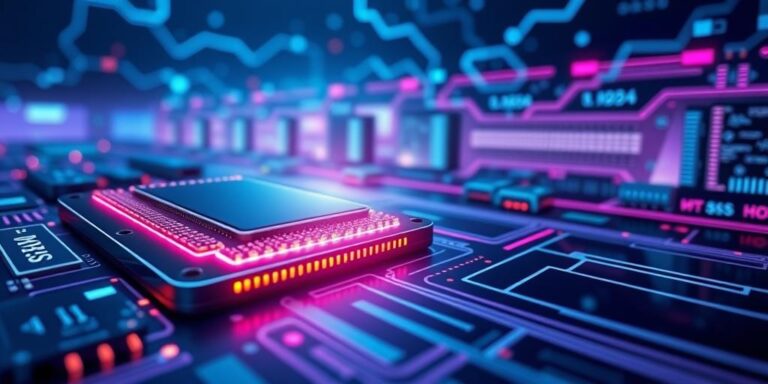The Future of SSDs and Next-Gen Memory Technologies (2025)
The world of data storage is in constant flux, with innovation driving ever-faster, more efficient, and more compact memory solutions. As we move into 2025, Solid State Drives (SSDs) continue to evolve, while next-generation memory technologies are poised to disrupt the landscape. This article delves into the key trends and advancements shaping the future of SSDs and explores the emerging memory technologies set to make their mark.
SSD Evolution: What’s New in 2025?
SSDs have become the standard for storage in most devices, from laptops to data centers. The advancements in SSD technology are focused on increasing speed, capacity, and endurance while reducing costs. Key areas of development include:
- Higher Layer Count NAND Flash: NAND flash memory is the foundation of SSDs. Increasing the number of layers in 3D NAND allows for greater storage density. Expect to see SSDs with 200+ layer NAND becoming more common, pushing capacities to new heights.
- PCIe Gen 5.0 Adoption: The Peripheral Component Interconnect Express (PCIe) Gen 5.0 interface doubles the bandwidth compared to Gen 4.0, enabling significantly faster data transfer rates. High-end SSDs in 2025 will leverage PCIe 5.0 to deliver blistering performance.
- QLC NAND Optimization: Quad-Level Cell (QLC) NAND offers higher density at a lower cost but traditionally suffers from lower endurance and speed. Advancements in controller technology and error correction are mitigating these drawbacks, making QLC SSDs a viable option for mainstream applications.
- Controller Advancements: SSD controllers are becoming more sophisticated, with improved algorithms for wear leveling, error correction, and data caching. These advancements enhance the overall performance and lifespan of SSDs.
Next-Generation Memory Technologies: The Disruptors
While SSDs continue to advance, several next-generation memory technologies are emerging with the potential to revolutionize data storage. These technologies offer unique advantages in terms of speed, endurance, and power efficiency.
- Compute Express Link (CXL): CXL is a new interconnect standard designed to address the growing demands of data-intensive applications. It enables tight integration between CPUs, GPUs, and memory, allowing for coherent memory sharing and improved performance. CXL-based memory solutions are expected to gain traction in data centers and high-performance computing.
- Storage Class Memory (SCM): SCM technologies, such as Intel Optane (3D XPoint) and Samsung Z-NAND, bridge the gap between DRAM and NAND flash. They offer significantly lower latency and higher endurance than NAND flash, making them suitable for caching and tiering applications. While Optane’s future is uncertain, other SCM technologies are likely to continue development.
- Resistive RAM (ReRAM): ReRAM is a non-volatile memory technology that uses changes in resistance to store data. It offers high speed, low power consumption, and excellent scalability. ReRAM is being explored for a variety of applications, including embedded memory, storage-class memory, and neuromorphic computing.
- Magnetoresistive RAM (MRAM): MRAM utilizes magnetic elements to store data, offering non-volatility, high speed, and virtually unlimited endurance. Spin-transfer torque MRAM (STT-MRAM) is gaining momentum and is being integrated into various products, including embedded systems and enterprise storage.
- Ferroelectric RAM (FeRAM): FeRAM uses a ferroelectric material to store data, providing non-volatility, low power consumption, and fast write speeds. It’s well-suited for applications requiring frequent writes and low power, such as RFID tags and smart cards.
Implications for the Future
The advancements in SSDs and the emergence of next-generation memory technologies have significant implications for various industries:
- Data Centers: Faster and more efficient memory solutions are crucial for handling the increasing demands of cloud computing, big data analytics, and artificial intelligence. CXL and SCM technologies will play a key role in optimizing data center performance.
- Gaming: Gamers will benefit from faster loading times, smoother gameplay, and improved responsiveness thanks to high-performance SSDs and emerging memory technologies.
- Mobile Devices: Low-power and high-density memory solutions are essential for extending battery life and enabling new features in smartphones, tablets, and other mobile devices. ReRAM and MRAM hold promise for mobile applications.
- Automotive: The automotive industry is increasingly reliant on memory for autonomous driving, infotainment systems, and advanced driver-assistance systems (ADAS). Reliable and high-performance memory solutions are critical for ensuring safety and functionality.
Conclusion
The future of data storage is bright, with ongoing advancements in SSD technology and the emergence of promising next-generation memory technologies. As we move further into 2025, expect to see SSDs pushing the boundaries of speed and capacity, while technologies like CXL, ReRAM, and MRAM begin to find their niche in various applications. These innovations will drive significant improvements in performance, efficiency, and capabilities across a wide range of industries.




